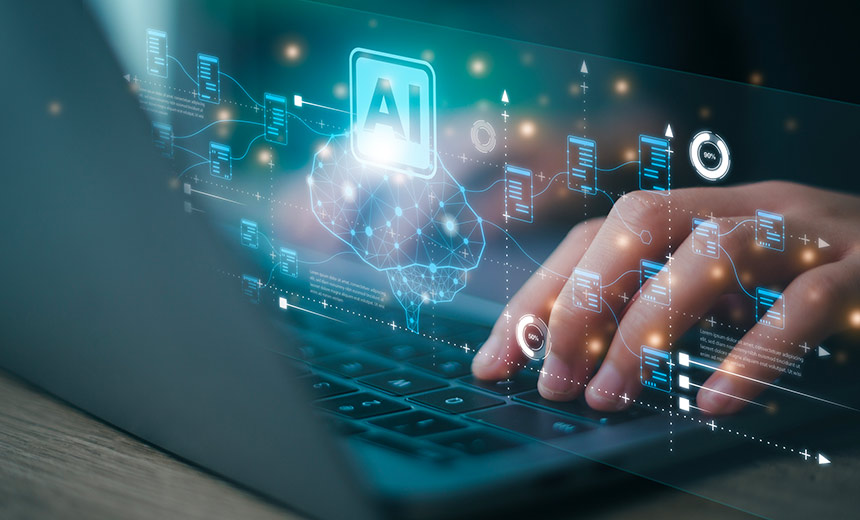Agentic AI,
Artificial Intelligence & Machine Learning,
Next-Generation Technologies & Secure Development
AI’s Influence on Productivity Necessitates Strategic Policy Measures

The evolution of work is no longer a hypothetical scenario; it is unfolding in real-time. With the integration of automated writing tools and robotic workforce solutions, artificial intelligence (AI) is rapidly permeating various sectors, often outpacing regulatory and social adaptations.
A recent report from McKinsey indicates an eye-opening statistic: approximately 30% of work hours in the United States could be automated by 2030. This technological shift is expected to significantly alter job configurations and generate new employment categories. Additional research suggests that the U.S. may require around 12 million workers to transition into new roles, highlighting the urgency for proactive policy adaptation.
This trend emphasizes a transformative evolution. Machines are not just tools; they are redefining productivity, the value of labor, and human objectives. The demand for data scientists and AI engineers is soaring at a rate of 29% annually, translating to a cumulative growth of 344% since 2013. Conversely, traditional administrative roles are declining, posing significant challenges for employers and governments who must navigate this transition equitably.
The Human Element of Automation
Every intelligent machine is fueled by data, primarily provided by humans. The foundational aspects of AI—such as data annotation and labeling—require significant human involvement. However, the nature of this labor is often fragmented and influenced by algorithmic processes, which can lack transparency.
For instance, employees in warehouses and customer service positions now frequently find their productivity monitored by AI systems that assign tasks or terminate employment without clear justification. While these algorithmic tools can promote efficiency, they also risk diminishing transparency and clarity regarding the decision-making process.
The objective for organizations remains clear: leverage AI to enhance operational efficacy while simultaneously preserving human oversight and accountability.
The Balancing Act of Efficiency and Human Factors
Automation sets new standards for speed and accuracy, but continuous digital oversight can lead to employee fatigue. Approximately 78% of organizations currently implement employee monitoring tools, which brings forth the challenge of ensuring AI enhances productivity without overwhelming workers.
Future productivity metrics should encompass quality, innovation, and collaboration in addition to traditional measures like volume or response times. AI can improve precision, yet human insight remains indispensable, particularly for complex or sensitive tasks.
Disparities in the Global AI Economy
The ramifications of AI vary greatly across geographical locations and skill levels. According to a 2023 World Bank report, employees with advanced education and digital proficiencies are five times more likely to gain from automation compared to those with less education.
High-income nations and resource-rich firms are currently reaping the largest productivity boosts from AI advancements, while many developing regions often perform the underlying data work. Addressing this imbalance will necessitate thoughtful investments in digital infrastructure and equitable training programs.
A 2025 PwC report indicates that jobs requiring AI competencies come with a financial premium across all sectors, with an average increase of 56% in wages. Potential policy strategies may involve incentives for skill development, taxation to support workforce transformation, and programs aimed at distributing the benefits of automation more broadly.
Innovations in Education and Learning
The traditional education framework is proving ill-suited to meet the ever-evolving demands of the job market. Many employers express concerns regarding the preparedness of young job seekers, pointing to significant gaps in the transition from education to employment.
AI has the potential to identify skill deficiencies and customize training, but educational systems must remain inclusive and cost-effective. Comprehensive training should encompass technical skills as well as ethical and social considerations to prepare individuals for collaborative human-AI scenarios.
Digital Advocacy and Worker Representation
While AI platforms have disrupted conventional labor structures, they have simultaneously catalyzed new forms of digital organization among workers. Employees are increasingly harnessing online tools to coordinate efforts, exchange information, and negotiate improved working conditions.
In 2023, for instance, delivery workers in Seoul slowed operations to protest the impact of algorithmic decisions on their workloads, exemplifying the shift in labor relations facilitated by technology. These actions illustrate the evolving nature of labor relations and underline the necessity for updated legal frameworks that protect the rights of those engaged in non-traditional work arrangements.
Rethinking the Concept of Work
While automation will continue to handle repetitive tasks, human contributions are indispensable in areas necessitating contextual insight. Government and industry stakeholders must prioritize investments in sectors like healthcare, education, and sustainability, where AI can complement rather than replace human input.
A Gallup survey conducted in 2023 uncovered that employees who derive purpose from their work exhibit higher productivity levels and lower turnover rates. Organizations that align AI integration with human development strategies will be better positioned for enduring success.
Guiding the Transition
The trajectory of work will depend significantly on how societies manage the integration of automation. AI has the capacity to enhance opportunities, improve workplace safety, and boost productivity, but careful governance is essential to avert the emergence of new inequalities.
Implementing comprehensive strategies—comprising policy reform, educational investments, and ethical guidelines for technology—is imperative to maximize the benefits of AI for all segments of society. Ultimately, the consequences of automation will hinge on the management decisions made by institutions.
